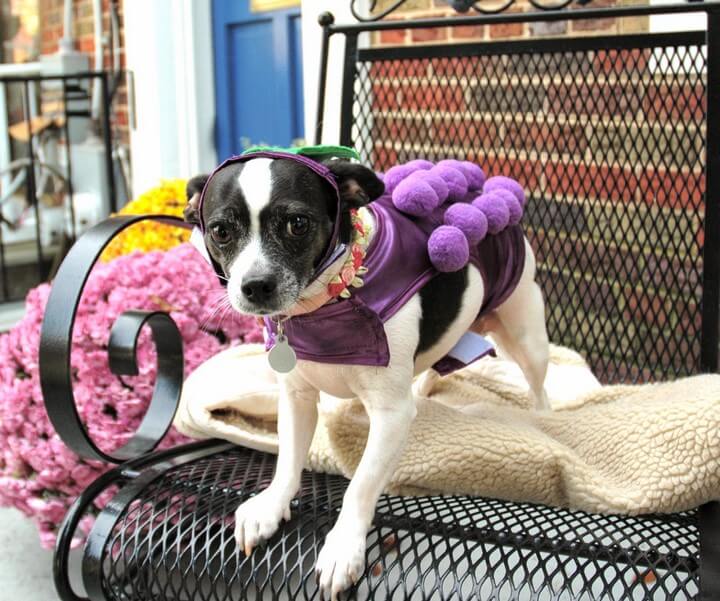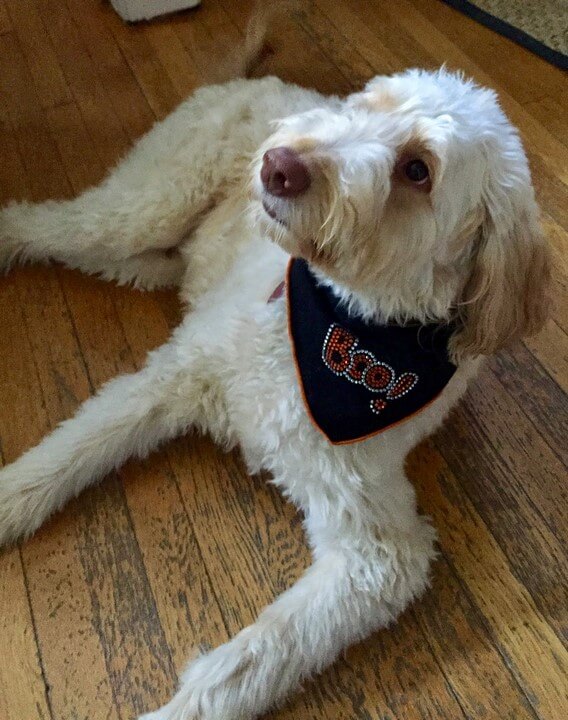 |
| Lilly dressed as a bunch of grapes |
With Halloween coming up and the holiday season just around
the corner everyone will have more candy around the house than usual and this
is an invitation for curious pups to steal a snack. My dogs Sparkle and Lilly have volunteered to be used as an
example for what can happen if your dog eats too much chocolate, they would
never dream of doing this in real life…
I brought Sparkle and Lilly into Friendship Hospital for
Animals for treatment after they had broken into the Halloween candy stash one
afternoon. Milk chocolate, which
consists mostly of cream and sugar, is generally not a huge concern unless
massive amounts are consumed but dark chocolate is another story. Among other treats there was a bag of
dark chocolate M&M’s missing and I was not sure how much each dog consumed.
An injectable medication was used to induce vomiting in both
dogs so we could empty their system of as much chocolate as possible. Sparkle
was the prime suspect as her heart rate was in the 200 beats per minute range,
which is much too fast and she was very agitated. Chocolate contains theobromine and
caffeine, which are both classified as methylxanthines. Unfortunately, dogs are
sensitive to the effects of methylxanthines which can cause hyperactivity,
increased heart rate, gastrointestinal upset, tremors, seizures and potentially
death when ingested at a toxic dose.
Lilly vomited a moderate amount of
chocolate but was not showing any clinical signs of chocolate toxicity. She was given activated charcoal by
mouth, fluids under the skin and an injection of Pepcid to help settle her
stomach. The fluids would help
flush out her bladder which is important since the methylxanthines are excreted
through the urine and can actually be reabsorbed if allowed to collect in the
bladder. Lilly was brought home
with instructions to take out frequently to urinate and monitor for any
vomiting or diarrhea.
Sparkle vomited slightly more chocolate than Lilly but since
she was showing clinical signs of chocolate toxicity which required more
aggressive treatment. We started
her on IV fluids and gave her a medication to help slow down her heart
rate. Overnight we checked her
heart rate every hour in case it crept back up again and she needed any additional
medication. Sparkle was also given
oral activated charcoal to bind any of the chocolate that wasn’t expelled when
she vomited. Other than being
anxious and whining all night she did great and I brought her home the next
morning.
There are a few take home messages in this tale. First keep the candy far away from
nosey dogs, even if you don’t think they are interested in eating it. Second, know what kind of chocolate
your dog has been exposed to. The
higher the cocoa content or the more bittersweet the chocolate, the smaller
amount it takes to reach a toxic dose.
For example, a small amount of baker’s chocolate is much more concerning
than a larger amount of milk chocolate.
A handy phone number to have is the ASPCA’s Animals PoisonControl Center at (888) 426-4435.
For a minimal fee you can speak directly to a veterinary toxicologist to
determine if your pet needs medical attention. Finally if your dog does eat chocolate seek veterinary care
immediately so we can induce vomiting to remove as much as possible from their
system. Most of the time they do
not need to stay in the hospital and can go home with you immediately.
Happy Halloween and please keep that candy away from nosey
paws!
 |
| Sparkle and Lilly |








